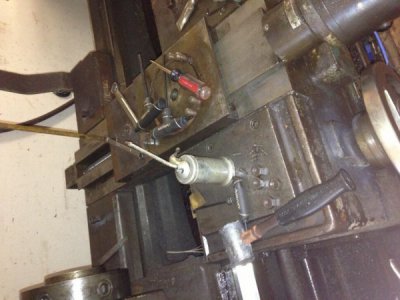So I was just looking on eBay and I saw some dc spindles that go from like 3000-12000 rpm and whatnot that look like they would be easy to make a tool post grinder out of. I also saw some ac ones but they needed a vfd and whatnot so too bulky for my liking. I'll put a link later in but does anybody think this would work? I have a dumore and a bigger tool post grinder (I've never used it it's huge) so this is more to see if anybody else wants to try it. I also thought about making one and a quick change mount so it could go on my CXA tool post so it would be easy to throw on and off. There are tons on eBay but the one I'm linking looks like it will be easy to mount via the face and won't require grabbing the OD.
https://www.ebay.com/itm/321818577027
This one also looks suited and can be water cooled but is faster and requires a vfd.
https://www.ebay.com/itm/391544299765
Well just wanted you guys opinion on this and if you think I'd be able to mount this right up on my lathe.
Also tho it about making and er collet shaped arbor just to get any accuracy I could for it. Because I'm guessing the China thing won't be super but maybe It could be.
https://www.ebay.com/itm/321818577027
This one also looks suited and can be water cooled but is faster and requires a vfd.
https://www.ebay.com/itm/391544299765
Well just wanted you guys opinion on this and if you think I'd be able to mount this right up on my lathe.
Also tho it about making and er collet shaped arbor just to get any accuracy I could for it. Because I'm guessing the China thing won't be super but maybe It could be.


